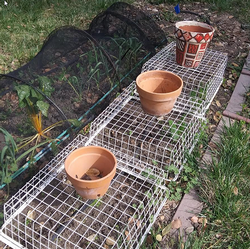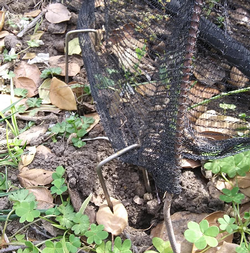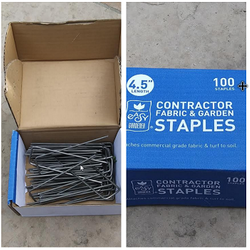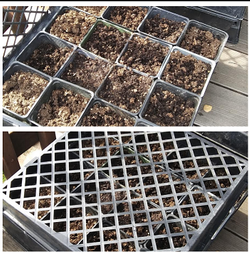Protecting Seedlings and Seeds from Wildlife
Protecting Seedlings and Seeds from Wildlife
by Elaine Richards
Animals have a lot of time on their little hands and paws and wings. They don't have much to do all day, except figuring out how to find things to eat, how to avoid being eaten, and how to make more little animals who will, in turn, look for things to eat. Because of that, our gardens are often a welcome source of sustenance to local wildlife.
My own garden plays host to a family of four enormous raccoons, at least one pungent skunk, an unknown and mysterious number of possums, and enough squirrels to make a conga line to the moon. Over the years, I've tried a variety of methods to thwart the animals and a lot of them do not work. For example, I purchased bird netting four times in my life and three of those times wound up kicking myself for buying it after that first time. It does nothing against anything larger than a sparrow, is non-biodegradable plastic, and is a pain to remove. It can also tangle up birds, which results in them dying, which is not in my mission statement. (Note, this has not happened on my watch, but did happen with a friend's garden, which was a very sad event, indeed.)
There are other methods, like buying cloches (plastic or glass), putting plastic bottles with the bottoms cut off them over plants, having a greenhouse, building Things with hardware cloth and actual carpentry skills, and so on. I don't buy bottled water or soda and wanted things I could put away in the winter easily. I did acquire two dozen used plastic water bottles once from a friend's car, dutifully cutting the bottoms off and putting them over pea shoots, but the yard looked like the inside of my friend's car, which was not a good look. They wound up recycling once the peas were big enough to be uninteresting to the birds.

Another is a hoop and fabric kit you can get specifically to protect plants from birds and squirrels. They are a bit annoying to assemble but easy to store flat in the winter when nothing is going on. I do have the problem of (I assume) squirrels lifting the fabric up to access what is under it and the birds eating the shoots, so I purchased a box of contractor-grade landscaping staples and secured the fabric by jamming the staples through the edges of the fabric and using generous quantities of staples to do so. This has been successful at discouraging marauders. The hoop and fabric will just not work at all unless the sides are firmly secured. The landscape staples I use are for pros to secure fabric under mulch. They are a lot cheaper than the rounded ones that people use to secure drip irrigation.
(Photos: netting-and-baskets, secure-the-netting, garden-staples2)


When I start seeds in the early spring, I do it on the back deck. In the summer, it's like lava up there, but in winter and early spring, the dark wood heats up enough to coax seedlings along. The problem is that squirrels will rummage around in all of my potted things. I do not know their motivation, I just go and scold them, which does not work. What does work is building a mini-greenhouse with three flats. Here's what I mean by “flats”. If you go to a nursery, you will find a bunch of plants in a plastic tray that has kind of a basketweave look to it. That's a flat (A “flat” can also mean this tray full of stuff, but I'm talking the tray.) These can do multiple duty as an actual flat to put the pots in, a “roof” over a flat full of seedling pots, and a platform to elevate the seedling pot flat above the wood surface so the decking doesn't stay wet and rot. I stack three trays. The bottom one is upside down and keeps the deck from staying wet. On top of that is the middle one which is right side up and full of pots of seedlings. The top one is upside down over the pots and keeps the varmints out.

Try these methods to help protect your seedlings.

